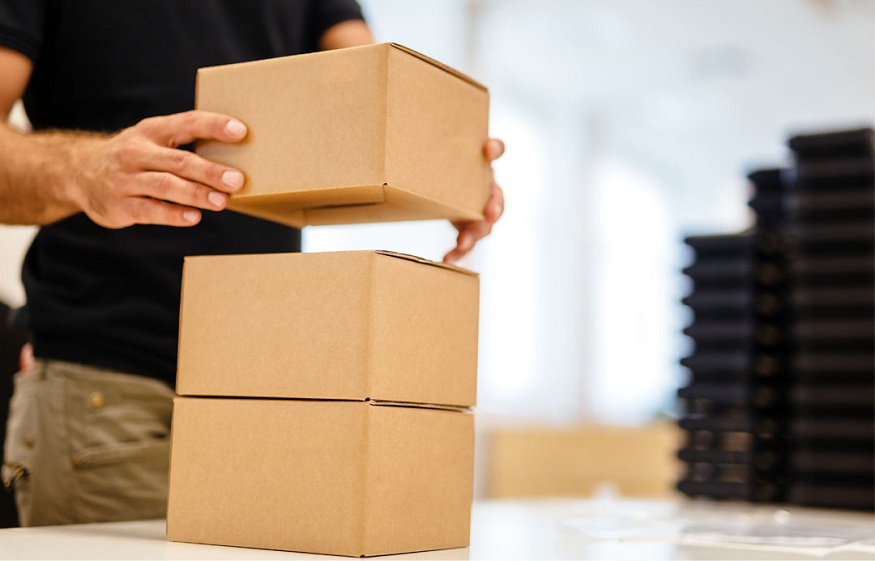Best Practices for E-Commerce Packaging Design

E-commerce is a thriving industry, with businesses increasingly relying on online platforms to reach customers. With this rise in online shopping comes the need for effective packaging design that protects products during shipping and enhances the overall customer experience. This article will explore the best practices for e-commerce packaging design, focusing on how businesses implement innovative strategies to create unique and functional packaging.
Factors Determining Packaging Designs
Safe Delivery: One of the critical considerations in e-commerce packaging design is ensuring the safe delivery of products to customers’ doorsteps. E-commerce businesses are investing in robust packaging materials and designs that can withstand the rigors of transportation. Sturdy corrugated cardboard boxes, padded mailers, and bubble wrap are commonly used for cushioning and protection. By prioritising product safety, businesses build trust with their customers and minimise the risk of damage during shipping.
Customisation: It is another vital aspect of e-commerce packaging design. Businesses are recognising the value of creating unique and branded packaging experiences. Custom boxes with printed logos, eye-catching colours, and attractive graphics help companies to stand out from the competition and leave a lasting impression on customers. By incorporating unique aesthetics into their designs, businesses infuse their packaging with a sense of brand identity.
Sustainability: It is a growing concern in e-commerce packaging design, and hence, it is at the forefront of factors to consider during packaging design. Businesses are adopting eco-friendly practices by using recyclable and biodegradable materials. Packaging designers are finding innovative ways to reduce their environmental impact, from compostable mailers to recycled cardboard boxes. Additionally, many businesses encourage customers to recycle or reuse the packaging, promoting a circular economy mindset.
Optimisation: Size and weight optimisation are critical considerations in e-commerce packaging design. Businesses understand that efficient packaging reduces shipping costs and minimises environmental impact. By carefully choosing the right-sized packaging for their products, they can save on materials and transportation, reducing their carbon footprint. This practice benefits the environment and contributes to cost savings, which can be passed on to customers.
Unboxing experiences: This feature has gained immense popularity recently, and businesses are leveraging this trend in their packaging designs. Unboxing refers to the process of unveiling and discovering the product inside. It has become an opportunity for companies to create a memorable and shareable customer experience. Packaging designers incorporate interactive elements such as personalised notes, surprise gifts, or QR codes that lead to exclusive content or discounts. By adding these special touches, businesses elevate the unboxing experience, fostering a sense of excitement and delight among customers.
Labelling: Clear and informative labelling is crucial in e-commerce packaging design. Most businesses ensure their packaging includes all the necessary information, such as product details, instructions, and safety warnings. Clear and legible fonts, accompanied by high-quality graphics, help customers quickly understand the contents of the package and any handling instructions. This attention to detail enhances the customer experience and ensures compliance with regulatory requirements.
Easy Returns: As the e-commerce market grows, easy return of products has become significant for businesses. Efficient and well-designed return packaging can make the process smoother for both the customer and the company. Hence, businesses are including pre-printed return labels and easy-to-follow instructions inside their packages. By simplifying the return process, businesses build trust and customer loyalty, even in cases where returns are necessary.
Tracking: Tracking and security features are also vital in e-commerce packaging design. Businesses understand that customers value transparency and reliability when it comes to the delivery of their orders. To address this, they integrate tracking codes and barcodes on their packaging, allowing customers to monitor the progress of their shipments easily. Moreover, tamper-evident seals or security features reassure that the package has not been tampered with during transit, ensuring the integrity of the product.
Feedback: Feedback and customer engagement are essential to successful e-commerce packaging design. All organisations actively seek customer feedback to improve their packaging solutions continually. They encourage customers to share their unboxing experiences on social media platforms, creating a sense of community and generating valuable user-generated content. By listening to customer feedback, businesses can refine their packaging designs to meet the needs and preferences of their target audience.
To sum up, e-commerce packaging design plays a crucial role in ensuring the safe delivery of products, enhancing the customer experience, and building brand loyalty. Businesses are implementing best practices to create effective packaging solutions that stand out in a competitive online market. By prioritising product safety, customisation, sustainability, optimisation, unboxing experiences, labelling, returns, tracking, and customer engagement, businesses are redefining the e-commerce packaging landscape. As the e-commerce industry continues to evolve, these best practices will guide businesses, helping them create packaging that protects their products and creates a memorable and delightful experience for their customers.
Contact us if you are looking for packaging design in Sydney.







